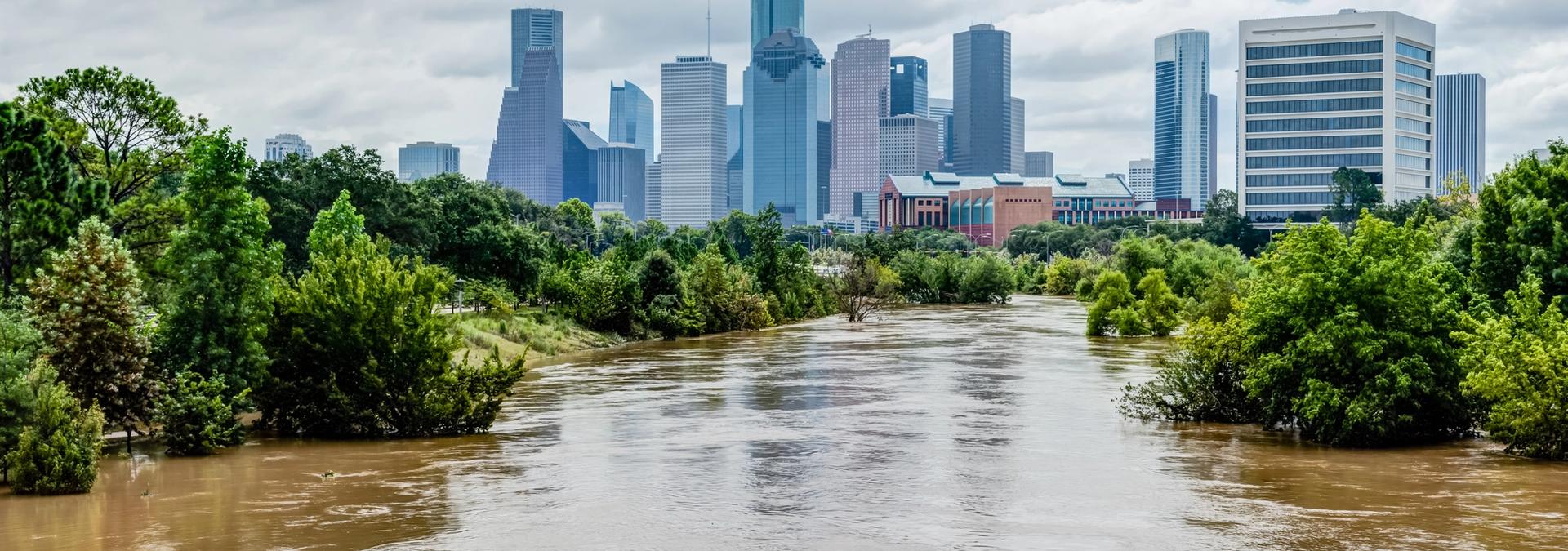
Breaking out of Texas' vicious cycle of climate change, disasters and recovery
Houston’s recent move to commit to 100 percent clean energy is a start. But the city can't do it without clear-eyed leadership from Austin.
It rained for four days when Hurricane Harvey made landfall three years ago. As the rain kept falling, nearly 340 tons of extra pollution were being spewed into the air from petrochemical facilities, almost all of which was concentrated in the working-class neighborhoods within 4 miles of the Houston Ship Channel.
Dozens of complaints about noxious smells were called into the city’s 311 line from Manchester, where a floating roof tank failed at Valero, while a gasoline spill at Magellan released 6 tons alone of the cancer-causing chemical benzene in Galena Park. Days later, Arkema in Crosby caught fire and sent 23 people to the hospital, including two first responders. Houstonians in these communities were trapped, as floodwaters rose rapidly toward their doorsteps and foul toxics filled the air.
As hurricane season begins this month, one forecasted to be worse than usual, with as many as 20 storms possible, these threats are as pressing as ever. As another hurricane season begins during a pandemic that has now claimed more than 103,000 lives, we have to prepare. We have to envision a cleaner, stronger Texas.
And we have to start right away. Temperatures are rising, bringing on more extreme heatwaves and making heavy rains more likely, accelerating disasters like Harvey. It’s not just in Texas. Heavy rains are flooding Midwestern farms, ruining crops and livelihoods. Wildfires are destroying properties in California. Large ice sheets are melting, raising sea levels. Some of the carbon dioxide we are adding to the atmosphere is ending up in the ocean, changing its chemistry.
Climate pollution is literally remaking the world.
The risks are huge in Houston, where the largest concentration of petrochemical facilities in the country lies just miles from the dangerously warming waters of the Gulf of Mexico. These facilities are hazardous even on sunny days — when they aren’t contributing to smoggy skies on ozone action days. Already, children and those most vulnerable living near the ship channel have a higher risk of health burdens like cancer from exposures to toxic pollution than those living farther away. These facilities continued to pollute during local orders to stay home to stop the spread of the coronavirus, negating the temporary gains in air quality from a 40 percent reduction in traffic.
And these facilities contribute to the disparities that are being exacerbated by the pandemic. Houstonians with health conditions caused by air pollution, like heart and lung disease, are at higher risk. These are the same Houstonians who told researchers this spring during the Kinder Houston Area Survey that they were struggling accessing economic opportunities and affording necessities like health insurance and groceries. They are the ones whose lives are being claimed by COVID-19.
We have to find ways to build together a more prosperous, less dangerous future, one free of the pollution and emissions that are damaging our health, economy, communities and security.
Houston’s recent move to commit to 100 percent clean energy is a start. So is the Climate Action Plan, which aims to reduce emissions and achieve carbon neutrality by 2050. But Houston can’t do it alone, especially when the federal government is ignoring the simplest science about everything from the health impacts of particle pollution to the economic and climate benefits of cleaner cars.
Houston also can’t do it without clear-eyed leadership from Austin, where the governor refuses to meet with scientists who have offered to help him appreciate the risks of climate change he claims not to understand.
But Gov. Greg Abbott has a responsibility to face those risks head on and lead Texas through them. More storms are coming — and all this is happening on his watch. Clean energy is one of the fastest-growing industries in the country. It produces jobs, and it will power our economy and lead to healthier air for more Texans — especially the communities of color and low wealth that suffer disproportionately from chronic pollution now.
The Houston region is trapped in a vicious cycle, depending on petrochemical facilities that produce pollution that gets trapped in the atmosphere, making hurricanes more severe and more frequent, requiring billions of dollars in scrambling, after-the-fact investments for new detention and drainage projects that fail to control the flooding that is more severe and more frequent, entrenching inequity when the disaster recovery dollars dry up and leave too many Houstonians behind.
Stopping the climate and toxic air pollution at the source is a way to break ourselves out of this cycle. We can do that if we work together — and that starts in Austin with effective leadership from Abbott. Where is the comprehensive plan that is desperately needed to ensure that one of the largest economies in the nation is resilient? What’s his vision for the future of the state he says he loves?
We’ll say the offer still stands. We invite you, Gov. Greg Abbott, to come together to discuss these questions and find meaningful answers that will build a stronger Texas for generations to come.
This article originally appeared in the Houston Chronicle.
Craft is senior director for climate and health with Environmental Defense Fund; Dessler is professor of atmospheric sciences at Texas A&M University.
STAY UP TO DATE
The quality of our newsletter is considered satisfactory and poses little or no risk.
SUBSCRIBE


